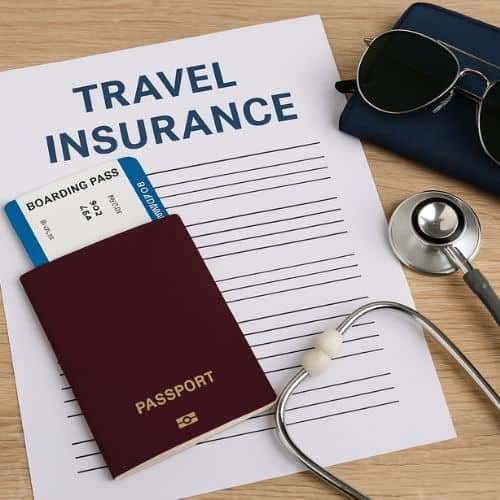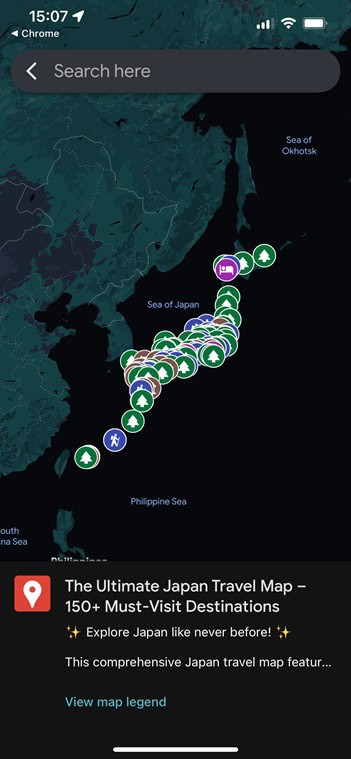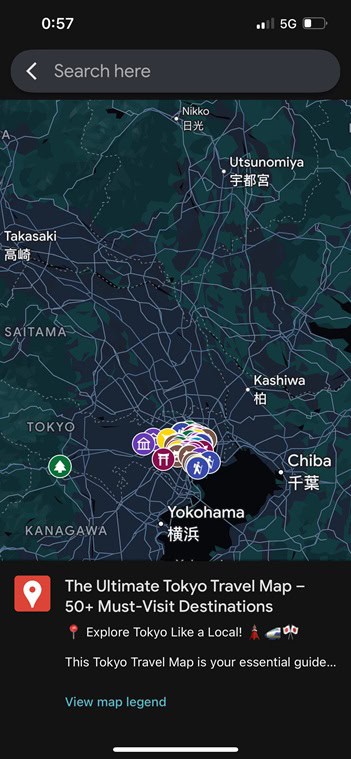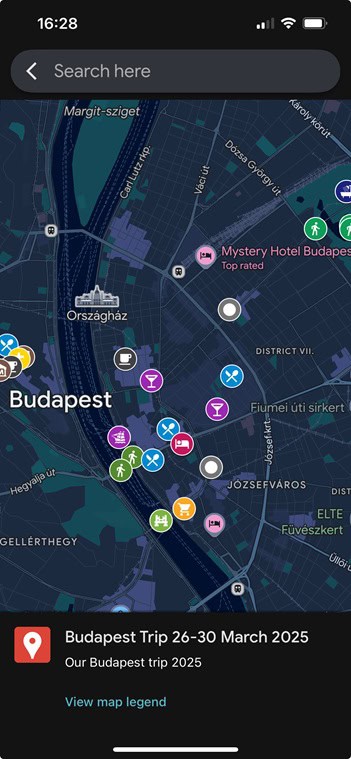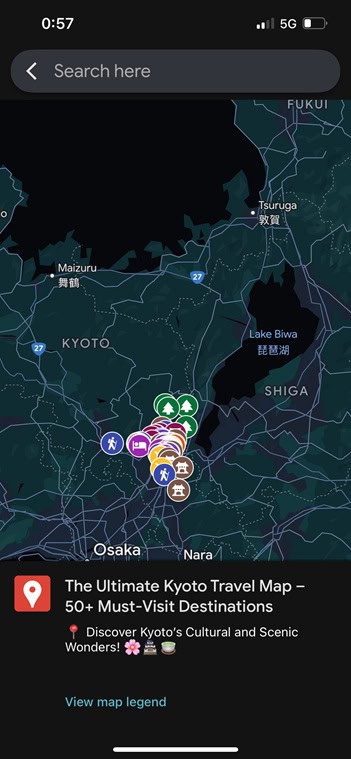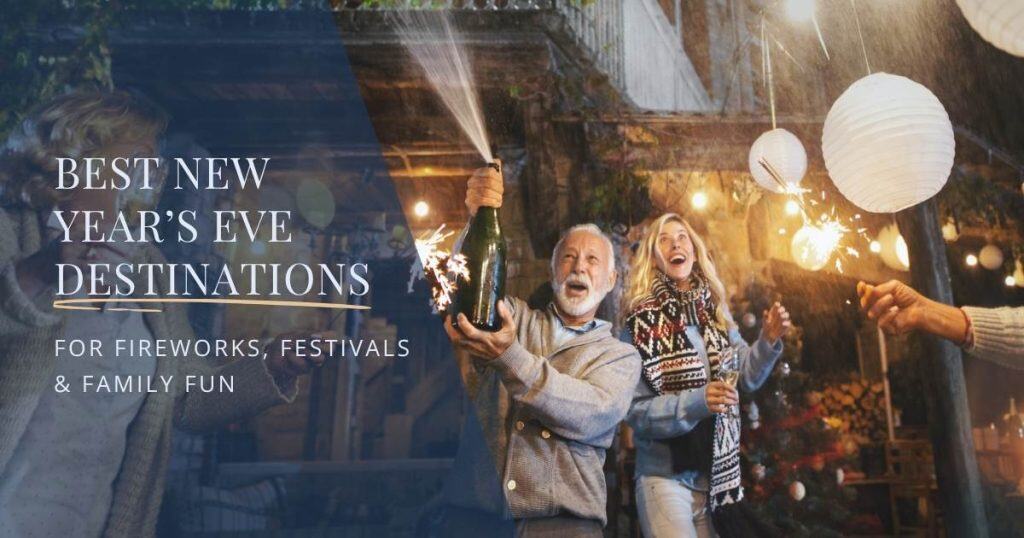Why Iceland in Winter 2025 Is Pure Magic
There are few places on Earth that feel as surreal and otherworldly as Iceland in winter. Picture the sky erupting with dancing green auroras, the hush of snow falling over volcanic landscapes, and the steam rising from geothermal pools as you soak beneath the stars. Traveling to Iceland in winter 2025 isn’t just about sightseeing—it’s about stepping into a living fairytale.
December through February might bring only a handful of daylight hours, but those short days come packed with wonder: Northern Lights adventures, glacier hikes, and cozy escapes that make braving the cold worthwhile. Whether you’re a couple searching for romance, a family seeking unforgettable adventures, or a cultural explorer chasing authenticity, Iceland’s winter is designed to create memories you’ll carry forever.
TL;DR (Too Long; Didn’t Read)
Visiting Iceland in winter 2025 means chasing the Northern Lights, relaxing in hot springs like the Blue Lagoon, and exploring glaciers and ice caves. December through February brings festive traditions, cozy cabin stays, and breathtaking frozen landscapes. This guide covers where to go, what to do, how to prepare, and a suggested 5-day itinerary to make your winter trip unforgettable.
Get Your FREE London Travel Map + 5 Must-Have Travel Resources!
Plan smarter, stress less, and make every trip unforgettable with these exclusive tools—100% FREE!
📩 Sign up now & download instantly!

Chasing the Northern Lights in Iceland 2025
The Northern Lights (Aurora Borealis) are Iceland’s ultimate winter spectacle, and 2025 promises an especially strong season thanks to peak solar activity. For many, witnessing the auroras is a once-in-a-lifetime goal, and Iceland’s wide-open skies make it one of the best places on the planet to check it off the bucket list.
When to go: The aurora season runs from late September through early April, but December to February is prime time when nights are longest.
Where to see them:
- Thingvellir National Park: Close to Reykjavik, yet dark enough to avoid city glow.
- Jökulsárlón Glacier Lagoon: Watch auroras dance above floating icebergs.
- Remote countryside cabins: Step outside your door for private viewing.
Pro Tips:
- Download an aurora forecast app to track activity and cloud cover.
- Bundle up—nights are cold, and patience is part of the magic.
- Consider guided tours: expert guides know the best viewing spots and increase your chances.
For budgeting, international visitors can avoid costly foreign exchange fees by using Wise, which lets you pay tour operators in local currency at real exchange rates—helpful when booking Northern Lights tours in advance.
Tips for Photographing the Northern Lights
Capturing the auroras can be tricky without preparation, but with a few simple tips you’ll bring home photos to remember:
- Use a tripod: Long exposures are essential to avoid blurry shots.
- Set your camera manually: ISO 800–1600, aperture f/2.8–f/4, and shutter speed 10–20 seconds are good starting points.
- Turn off flash: It won’t help and will wash out the sky.
- Bring extra batteries: Cold weather drains them quickly.
- Apps help: Download an aurora forecast app and a star-tracking app to plan the best shot.
Even if you’re not a professional, experimenting with these settings can capture the magic dancing across Iceland’s winter skies.
Icy Adventures & Glacier Tours
Winter transforms Iceland into a playground of ice and snow. If you’re craving adventure, glacier tours are an unforgettable way to connect with the country’s dramatic landscapes.
- Glacier Hiking: Trek across Vatnajökull, Europe’s largest glacier, with crampons strapped to your boots. The crunch of ice beneath your feet and panoramic views of frozen valleys feel like walking on another planet.
- Ice Caves: Explore dazzling blue ice caves carved deep within glaciers, accessible only in winter months. Tours often depart from Jökulsárlón or Skaftafell.
- Snowmobiling: Ride across Langjökull glacier for a thrill-seeking way to experience Iceland’s icy wilderness.
Why tours are essential: Glaciers are constantly shifting and can be dangerous without trained guides. Booking with reputable providers ensures safety while unlocking areas that solo travelers can’t reach.
Adventurous couples often choose a mix of glacier tours and Northern Lights outings, while families can opt for shorter, guided experiences suitable for kids.
Thermal Bliss – Hot Springs & The Blue Lagoon
After days of icy exploration, nothing beats slipping into Iceland’s steaming geothermal pools. These natural wonders are more than tourist attractions—they’re part of Icelandic culture, a tradition of wellness and connection dating back centuries.
- Blue Lagoon: The world-famous spa near Keflavik Airport is iconic for its milky-blue waters, mineral-rich mud masks, and luxury facilities. Visiting in winter, with snow swirling above, feels especially surreal.
- Sky Lagoon (Reykjavik): A newer competitor with stunning ocean views and a 7-step ritual inspired by Icelandic bathing traditions.
- Secret Lagoon (Flúðir): Rustic and authentic, tucked into the Golden Circle route.
- Reykjadalur Hot Spring River: A short hike rewards you with a geothermal river where you can bathe in nature itself.
For families: Many lagoons have safe shallow areas for children, though check minimum age rules in advance.
For couples: Sunset or evening visits turn a dip into a romantic escape.
Tip: Bring quick-dry towels and water shoes—it’s a chilly dash from the locker room to the pool!
Need More Help Planning Your Trip?
Cozy Escapes – Where to Stay in Winter
Choosing the right base can make or break your Iceland winter adventure. Whether you prefer the buzz of Reykjavik, the silence of a countryside cabin, or the luxury of a spa lodge, there’s a stay for every style of traveler.
Best Reykjavik Hotels for Winter 2025
Staying in the capital keeps you close to museums, cozy cafés, nightlife, and day tours. Reykjavik hotels are especially convenient for families who want easy access to dining options and central pick-ups for excursions. Whether you’re visiting as a family, couple, or solo explorer, Reykjavik has options to match every style.
Hotel Borg by Keahotels: An Art Deco landmark in the heart of Reykjavik, overlooking Austurvöllur Square. It’s a stylish choice for couples and cultural explorers who want elegance paired with central convenience.
Center Hotels Plaza: Located near Harpa Concert Hall and Laugavegur shopping street, this hotel is a family-friendly pick with spacious rooms and easy walkability to attractions.
Sand Hotel by Keahotels: A boutique stay on Laugavegur offering chic interiors, great breakfast, and cozy vibes for winter travelers. Perfect for couples or solo visitors looking for charm and style.
Canopy by Hilton Reykjavik City Centre: Modern design, an excellent on-site restaurant, and thoughtful touches like complimentary tastings. A good all-rounder for travelers who want comfort and atmosphere.
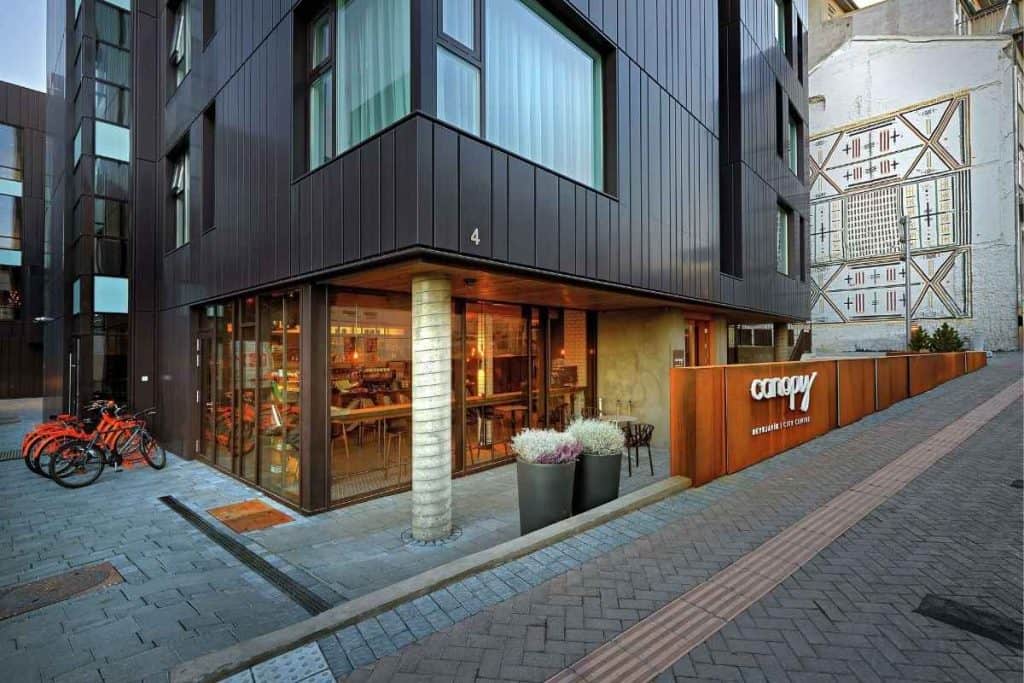
- Families: Look for hotels near Laugavegur shopping street or the Harpa Concert Hall for walkable access.
- Couples & solo travelers: Boutique stays in the downtown area offer chic design and proximity to cultural events.
Countryside Cabins for Northern Lights Views
If seeing the auroras is your priority, countryside cabins are ideal. Just a short drive from Reykjavik or out in South Iceland, these stays let you step outside to a sky full of stars.
- Why choose this option: Privacy, quiet, and clear views of the Northern Lights.
- Best for: Couples seeking romance, families looking for a private space with room for kids, and cultural explorers wanting to disconnect.
If you’re looking for a standout stay along the South Coast, Hotel Grímsborgir by Keahotels is a top choice. Nestled in the Golden Circle region, it offers cozy yet elegant rooms and suites, many with private hot tubs — perfect for watching the Northern Lights on a clear winter night.


What makes Grímsborgir special is its balance of luxury and location. You’re within easy reach of iconic sights like Gullfoss, Geysir, and Þingvellir National Park, yet the setting feels tranquil and secluded. It’s a wonderful pick for couples seeking romance as well as families who want a spacious, welcoming base to return to after icy adventures.
Luxury Lodges for an Indulgent Stay
For travelers who want to balance icy adventures with indulgence, Iceland offers luxury retreats with panoramic views and private hot tubs. These lodges often include spa services and fine dining, turning a winter trip into a restorative escape.
The Retreat at Blue Lagoon (near Grindavík): A true luxury icon in Iceland, this lodge features suites with floor-to-ceiling windows, private lagoon access, and award-winning spa treatments. It’s perfect for couples celebrating honeymoons or anniversaries.
ION Adventure Hotel (Golden Circle area): Known for its striking modern design and remote location, this eco-luxury lodge offers Northern Lights views from the lounge, geothermal pools, and upscale dining. A favorite for cultural explorers who want comfort and atmosphere.
Deplar Farm (Troll Peninsula, North Iceland): A converted sheep farm turned ultra-luxury lodge, Deplar is one of Iceland’s most exclusive stays. It offers heli-skiing in winter, geothermal pools, and a full wellness spa — ideal for high-end travelers seeking privacy and adventure.
- Why choose luxury lodges in Iceland: Ultimate comfort after glacier hikes or long aurora hunts.
- Best for: Couples celebrating honeymoons, anniversaries, or anyone who wants to splurge on comfort.
Wherever you stay, proximity to dark skies is a plus—step outside, and you may have the auroras all to yourself.
Explore the latest winter deals on Booking.com or Expedia and find the perfect match for your cozy escape.
Heads-up: Best Areas to Stay in Iceland in Winter
Choosing the right base depends on your travel style:
- Reykjavik: Best for first-timers, families, and cultural explorers who want easy access to tours, dining, and winter festivals.
- South Coast: Ideal for aurora seekers and adventurers who want to be closer to waterfalls, glaciers, and black sand beaches.
- North Iceland (Akureyri): Great for repeat visitors or those seeking fewer crowds, with excellent skiing and a chance for quieter Northern Lights viewing.
Tip: If it’s your first Iceland trip, base yourself in Reykjavik and add a few nights along the South Coast for the best mix of convenience and natural wonders.
Best Time to Visit Iceland in Winter 2025
Winter in Iceland runs from late November through February, and each month has its own highlights. Choosing the right timing depends on what you want most from your trip.
- December: The most festive month, with Reykjavik glowing in Christmas lights and traditions like the Yule Lads bringing cultural charm. Expect only 4–5 hours of daylight, making this a magical time for Northern Lights hunts and cozy city evenings.
- January: A quieter period after the holidays. Prices are often lower, and the landscapes are at their snowiest. Short daylight hours continue, but aurora activity remains strong. Ideal for travelers who want fewer crowds.
- February: Days start to lengthen to 7–8 hours of daylight, giving you more time for sightseeing. Ice caves and glaciers are still accessible, and it’s one of the best months for combining adventure with Northern Lights viewing.
💡 Tip: If it’s your first visit, December offers the most cultural magic, while February balances daylight and adventure opportunities.
December Festivals & Cultural Highlights
Winter in Iceland isn’t only about nature; it’s also about embracing a warm, festive spirit. December is packed with cultural traditions and celebrations that make visiting during the holidays extra special.
- Reykjavik Christmas Lights: The city glows with twinkling displays, giant Christmas cats (from local folklore), and charming markets selling crafts, mulled wine, and holiday treats.
- The Yule Lads: Iceland’s quirky take on Santa Claus—13 mischievous figures who visit children in the 13 nights before Christmas. Their playful legacy adds cultural charm for families traveling with kids.
- New Year’s Eve: Icelanders celebrate with massive community bonfires and fireworks that light up the sky—an unforgettable way to ring in 2025.
- Winter Cuisine: Warm up with hearty lamb stews, fresh fish dishes, and Icelandic hot chocolate topped with whipped cream. Adventurous eaters can try fermented shark, though most prefer cozy pastries like kleinur (twisted doughnuts).
Cultural explorers will love how deeply traditions are woven into daily life, while families will find plenty of festive magic to delight children.
Discover Our Ultimate Collection of Travel Maps
Practical Tips for Winter Travel
Traveling to Iceland in winter is magical—but it requires a bit of extra preparation. Here are key tips to make your trip smooth, safe, and unforgettable.
Daylight Hours:
- In December, expect only 4–5 hours of daylight. Plan main excursions (Golden Circle, glacier tours) during this window.
- Use the long evenings for Northern Lights hunts, cultural experiences, or cozy dinners.
Driving & Safety:
- Roads can be snowy and icy—rent a 4×4 with studded tires for safety.
- Always check road conditions at safetravel.is and weather updates before heading out.
- If you’re not comfortable with winter driving, opt for guided tours—stress-free and reliable.
Packing Essentials:
- Thermal base layers, fleece, and waterproof outer shells.
- Insulated boots with good grip; consider crampons for icy paths.
- Gloves, hats, scarves, and hand warmers.
- Headlamp for exploring in low light (sunrise is around 11 am in December).
Budgeting Smart:
- Iceland isn’t cheap, but there are ways to stretch your money.
- Use Wise for currency exchange—get the real exchange rate when paying hotels or tours.
- Track expenses with TravelSpend to avoid surprises.
How Expensive Is Iceland in Winter 2025?
Iceland is one of Europe’s pricier destinations, and winter is no exception. Here’s a rough breakdown of daily costs to help you budget:
- Accommodation: $150–$300 per night for mid-range hotels; luxury stays can exceed $500.
- Meals: $20–$30 per person at casual cafés; $60+ at sit-down restaurants. Grocery shopping saves significantly.
- Tours & Activities: $100–$200 per person for glacier hikes, Northern Lights tours, or Blue Lagoon visits.
- Car Rental: $80–$150 per day for a 4×4 with winter tires; add fuel at around $2.30/liter.
💡 Tip: Booking bundled packages on Expedia can reduce overall costs, and using grocery stores like Bónus for snacks and meals keeps expenses manageable.
Is Iceland Generally Safe in Winter?
Yes — Iceland is generally safe to visit in winter, but the conditions require extra awareness. Roads can become icy and storms can roll in quickly, which makes driving more challenging for first-time visitors. Always check the official safetravel.is website before heading out and never underestimate weather warnings.
For families, winter safety means planning shorter day trips, dressing children in proper thermal layers, and sticking to well-traveled routes. Guided tours are the most stress-free way to explore — you can relax while professionals handle the unpredictable conditions. For couples or solo travelers, driving is doable with the right vehicle (4×4 with studded tires) and careful planning, but remember that flexibility is key in winter.
By preparing smartly, you’ll focus less on logistics and more on enjoying the magic..
Travel Insurance: A Must for Iceland in Winter
Iceland’s winter is breathtaking, but unpredictable weather can lead to delayed flights, road closures, or sudden itinerary changes. That’s why having reliable travel insurance is essential — it gives you peace of mind if plans shift unexpectedly.
Coverage for medical emergencies, trip interruptions, and even lost luggage ensures your adventure stays stress-free. Families especially benefit from the reassurance that everyone is protected, no matter what the conditions bring.
💡 Tip: Consider policies that include weather-related disruptions. For Iceland in winter, flexibility and backup plans are key.
Getting Around Iceland in Winter
How you choose to get around Iceland in winter can shape your trip. While self-driving is possible, many visitors prefer guided tours (like ones from Viator or GetYourGuide) or buses for safety and convenience.
- Self-driving: Renting a 4×4 with winter tires gives you freedom to explore at your own pace. It’s a great option for couples or cultural explorers who are comfortable with icy roads and flexible plans. Always check road conditions and avoid driving in storms.
- Guided Tours: Stress-free and reliable. Companies run day trips to the Golden Circle, South Coast, and Northern Lights — no need to worry about weather, navigation, or parking. Perfect for families with kids or anyone seeking peace of mind.
- Bus Transfers: For airport runs or reaching towns like Akureyri, buses are a budget-friendly choice. Services like Flybus connect Keflavik Airport to Reykjavik, and Omio is a handy platform to compare and book intercity routes.
✨ For many first-time winter visitors, combining a few guided tours with short self-drive days strikes the best balance of freedom and safety.
Suggested 5-Day Winter Itinerary
Not sure how to structure your adventure? Here’s a sample 5-day Iceland winter itinerary designed for couples, adventure seekers, and families.
Day 1: Arrival + Blue Lagoon
- Land in Keflavik, head straight to the Blue Lagoon for a jetlag-soothing soak.
- Overnight in Reykjavik.
Day 2: Golden Circle
- Visit Thingvellir National Park, Gullfoss Waterfall, and the erupting Geysir.
- End the day in a countryside guesthouse—perfect for spotting the Northern Lights.
Day 3: South Coast Wonders
- Marvel at Seljalandsfoss and Skógafoss waterfalls, then walk the black sands of Reynisfjara Beach.
- Optional: short family-friendly glacier walk.
Day 4: Glacier Adventure
- Take a guided ice cave tour at Vatnajökull or snowmobile on Langjökull.
- Spend the evening relaxing in a hot spring or cabin stay.
Day 5: Reykjavik + Northern Lights Finale
- Explore Reykjavik’s cozy cafés, museums, and colorful street art.
- Take one last aurora hunt before departure.
This itinerary balances relaxation with adventure, and can easily be adapted for families with children by choosing shorter day trips or skipping longer drives.
Build Your Stress-Free Iceland Winter 2025 Itinerary
From Northern Lights chases to Blue Lagoon soaks and glacier tours, let our free AI itinerary builder craft a day-by-day plan tailored to your dates, pace, and travel style—perfect for families, couples, and cultural explorers.
Plan smarter, travel cozier—get a personalized Iceland route in minutes:

Test Your Travel Smarts with Our Quizzes!
Think you know your way around the world? From cultural traditions to hidden gems, our short and playful travel quizzes are the perfect way to challenge yourself, learn something new, and maybe even spark your next adventure. Great for anyone who loves a bit of travel trivia fun!
Memorable Mentions
If you have extra time, consider adding these experiences to your trip:
- Icelandic Horseback Riding: Ride the unique, small but sturdy Icelandic horses through snowy landscapes—gentle enough for beginners.
- Whale Watching: While peak season is summer, winter tours still operate from Reykjavik and Akureyri, offering a chance to spot orcas and humpbacks.
- Indoor Escapes: Visit Perlan Museum for an indoor ice cave, or attend a concert at the glass-front Harpa Hall in Reykjavik.
These add-ons can deepen your trip, especially for cultural explorers seeking variety beyond the classic highlights.
Conclusion: Wrap Yourself in Iceland’s Winter Wonder
Traveling to Iceland in winter is more than just a vacation—it’s stepping into a storybook where fire meets ice, where traditions meet modern adventure, and where cozy escapes balance out bold explorations.
From chasing the Northern Lights to soaking in the Blue Lagoon, hiking glaciers, and celebrating festive traditions, every moment is designed to connect you with nature and the people you’re traveling with. Whether you’re a family building unforgettable memories, a couple seeking romance, or a solo cultural explorer, Iceland in winter offers something rare: the chance to feel both exhilarated and at peace.
✨ Ready to plan your own Icelandic winter adventure? Start sketching your dream trip with our free itinerary builder—and let us help you transform inspiration into a seamless journey, or just drop a comment below and we’ll contact you asap to help you plan your perfect trip in no time.
Your Ultimate Travel Companion
Iceland in Winter 2025: Frequently Asked Questions
Q: When is the best time to see the Northern Lights in Iceland in 2025?
A: The Northern Lights are visible in Iceland from late September to early April, with peak viewing between December and February when nights are longest. Clear skies and minimal light pollution offer the best chance to see them.
Q: Is it safe to drive in Iceland during the winter months?
A: Driving in Iceland in winter can be challenging due to snow, ice, and sudden weather changes. Renting a 4×4 vehicle with studded tires is recommended, and always check conditions on safetravel.is. Travelers who aren’t comfortable with winter driving should join guided tours instead.
Q: How many hours of daylight does Iceland get in December?
A: In December, Iceland gets about 4–5 hours of daylight, with sunrise around 11 am and sunset around 3–4 pm. Short daylight hours make planning essential, but the long evenings are perfect for Northern Lights viewing and cozy cultural activities.
Q: What should I pack for a winter trip to Iceland?
A: Essential items include thermal base layers, waterproof and windproof outerwear, insulated boots with good grip, gloves, hats, scarves, and hand warmers. A headlamp is useful for exploring in low light, and crampons help with icy paths.
Q: Can families with young children enjoy Iceland in winter?
A: Yes, families can enjoy Iceland in winter with some adjustments. Hot springs, Reykjavik’s festive holiday events, and short day trips like the Golden Circle are family-friendly. It’s best to avoid very long drives or extreme outdoor activities with young children.
Q: Are the Blue Lagoon and other hot springs open in winter?
A: Yes, the Blue Lagoon, Sky Lagoon, Secret Lagoon, and many natural hot springs are open year-round. Winter is a popular time to visit because the contrast of warm water and snowy surroundings makes for a unique experience.
Q: What are the top cultural events in Iceland during December?
A: December highlights include Reykjavik’s Christmas markets and lights, the tradition of the Yule Lads visiting children, and spectacular New Year’s Eve celebrations with bonfires and fireworks across the country.
Q: How many days are enough for an Iceland winter trip?
A: A 5-day itinerary is ideal for first-time visitors, covering Reykjavik, the Golden Circle, South Coast, and Northern Lights tours. Travelers with more time can add extra days for glacier adventures, North Iceland, or a slower-paced experience.
📌 Love cultural travel? Explore more ideas on Pinterest →


